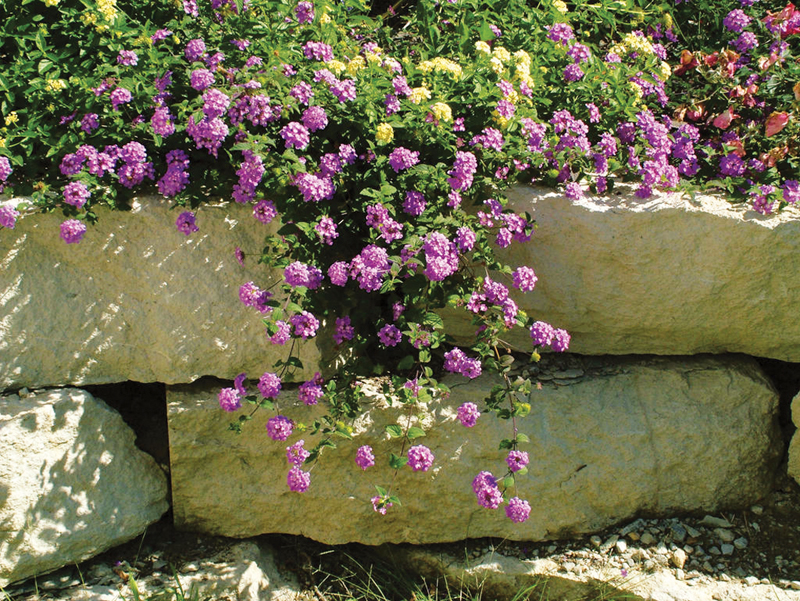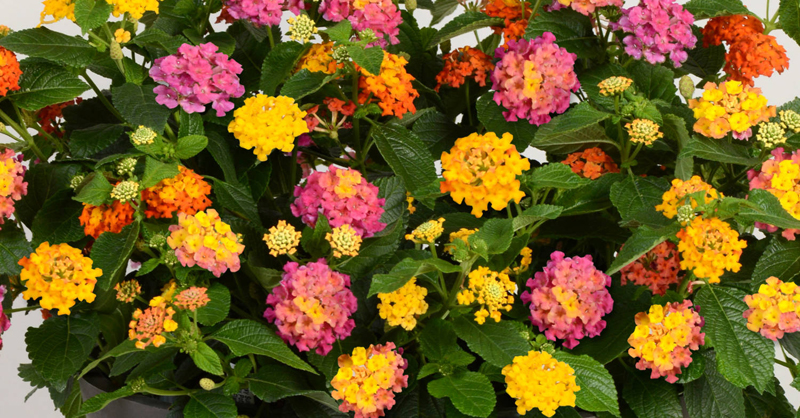Bees love showy lantana, one of the Clayton Valley’s most summer hardy plants

 CLAYTON, CA (July 25, 2023) — Let’s hear it for lantana, one of the Clayton Valley’s most summer hardy families of plants.
CLAYTON, CA (July 25, 2023) — Let’s hear it for lantana, one of the Clayton Valley’s most summer hardy families of plants.
Lantana boasts prolific blooms of gold, purple, pink, red, orange and white from early summer through late fall. Lantana plants are easy to grow, water-wise and long-blooming.
The most common lantana sold is the trailing purple groundcover, which has a small oval, dusty green, textured leaf. Woody stems stretch outward 3-4 feet and are covered with nickel-sized, grayish-purple globes of tiny flowers. Trailing purple lantana puts on some height as it matures. You can expect piles to reach more than 2 feet tall eventually. The height occurs more quickly if you have to control the width.
Trailing white Lantana is also popular. This selection grows just as well as the purple, with all the same growth habits. The leaf color and texture are the same, but, of course, the flower color is white. Consider placing one purple and one white lantana in the same hole for a great looking companion planting.
New Gold
New Gold is an exciting, bold yellow trailing lantana with dark green, small, textured leaves. Its superior yellow really stands out in the landscape. Consider mixing it around red foliage plants for a nice contrast.
The bush lantanas are very desirable, with more color selections. They tend to develop slowly into shrubs. Bush lantanas can reach heights of 2-4 feet tall and wide. This will take some time; our cold winters slow the process. Dallas Red, Confetti, Radiation and Irene are the most popular colors of bush lantana. They have been around for years and are predictable and very reliable.
Dallas Red’s color takes a journey. The globe-shaped flower begins as a group of small red flowers with some gold and orange in the mix. As the flowers mature, the gold and orange turn to a bright, yellow-based red.
Confetti is another colorful lantana that starts out as one shade and changes into another. First, the flower is a group of pastel pink and yellow with just a couple of white tiny flowers creating its globe. Within a day, the multi-color pastel blossom changes to nice light pink. Confetti isn’t the showiest lantana on the shelf, but planted against a dark backdrop, like an old fence, it comes alive.
Irene starts off as a globe of mostly magenta pink with a handful of tiny orange and yellow accent flowers. Eventually, the blossom matures to a solid magenta. This bold color works well with red foliage and blue flowering plants.
Dwarf shrublets
Several collections of dwarf shrublets have emerged in the past few years. The Bandana, Bloomify and Shamrock collections have a series of color combinations that resemble their larger growing relatives, but with sizes that mature to 12-16 inches tall and wide. Look for Bandana Lemon Zest, which is a yellow that ages to white, Bloomify Rose or Shamrock Peach.
Colorful lantana thrives in our Clayton Valley landscapes and gardens June through November. During the winter months, lantana can appear dry and dead. Treat it like a perennial: Enjoy your lantana when it’s beautiful and don’t fret when it rests. In the middle of March, cut back the dry, woody stems to make room for the new season’s growth.
Lantana is very bee and butterfly attractive, and pest and disease tolerant. It is a great installation for anyone needing blasts of bold color in their summer landscape.
Contact Nicole Hackett with questions or comments by email at gardengirl94517@yahoo.com

Nicole Hackett
Nicole is the Garden Girl at R&M Pool, Patio, Gifts and Garden. You can contact her with questions or comments by email at gardengirl94517@yahoo.com

